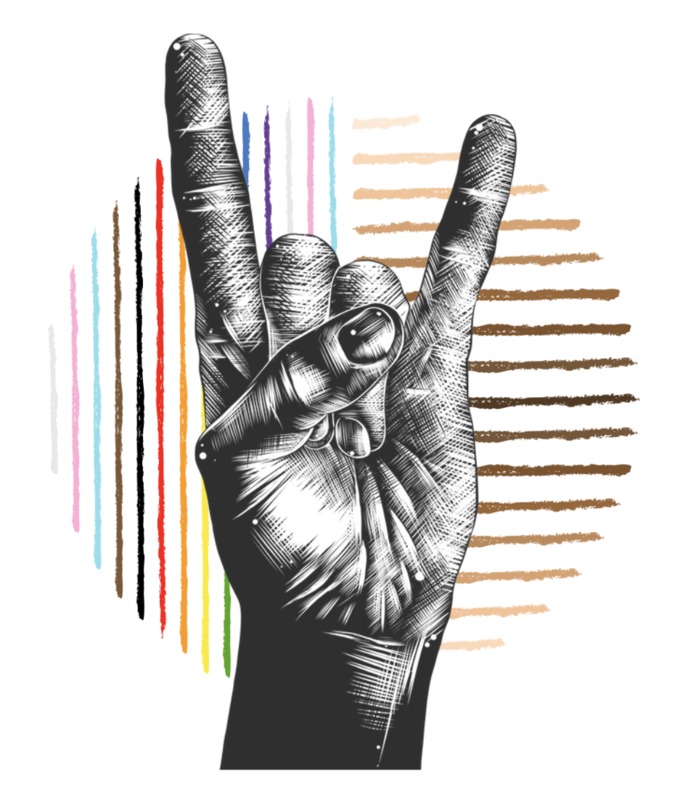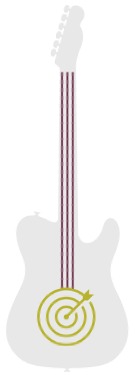Context of Study
Active rock radio stations can be heard in most major Canadian cities playing a mix of new and classic hard rock. However, does this music reflect the racial, ethnic, gender and sexual diversity of Canada? Further, are listeners truly represented by the songs that are charting on the radio? If not, who is succeeding in this industry, and who is profiting from the hit songs?
To explore these questions we have curated a prosopography of active rock artists. The resulting dataset contains the top 100 songs played on active rock radio stations in Canada from 2010 to 2020. The data is sourced from a larger dataset generated by Mediabase, a radio-monitoring service that produces weekly and annual ranking reports capturing radio airplay in Canada and the USA. The Mediabase data is aggregated from 17 reporting stations across Canada (see Figure 1). These radio stations are situated in seven provinces, with nearly half of the stations situated in Ontario. The original dataset we obtained outlines the artist, song, label, total spins overall and by month on the yearend reports, as well as the annual ranking. We have augmented it to further define the artists’ metadata by race, gender identity, sexuality, nationality, and ensemble type.
Research Goals
While curating the dataset an obvious trend emerged of cisgendered, heterosexual, white male artists, and corroborates Crider’s (2020) research that active rock radio is an overwhelmingly male format, with on average less than five percent of airtime going to female artists. We wanted to take Crider’s study a step further than the female-male binary of active rock, using an intersectional approach to examine and highlight marginalized artists in the active rock genre: Black, Indigenous, and musicians of colour (BIPOC); two-spirit, lesbian, gay, bisexual, transgender and queer (2SLGBTQ+) musicians; non-binary musicians, in addition to female musicians. When visually representing our dataset, we made a conscious effort to highlight these artists because of how little space they occupy in the genre. Part of our project explores techniques that attempt to showcase the underrepresented artists in an interesting and meaningful way. Our approach is indebted to Foucault Welles (2014), who encourages researchers to focus on the outlying artists as central to the data rather than the exception to the active rock norm.
In this work we have sought to highlight the marginalized artists, exploring connections between these artists’ total spins and ranking in the charts as compared to the straight white majority of the genre. Taking an intersectional approach to the analysis has revealed that while the radio format plays mostly music by white, male artists, that there are women BIPOC and 2SLGBTQ+ artists on the yearend reports. We have looked at the data over the eleven-year reporting period, to examine how representation of women, BIPOC, and 2SLGBTQ+ artists has changed over time in addition to the factors that may affect diversity of voices.
We then went a step further to look at the artists from the perspective of their nationality, to see what percentage of the top songs are by Canadian artists. Since we are only looking at the top 100 songs played annually, and not the full list of songs played over the course of each calendar year in this study period, we could only take into consideration how Canadian artists factor into the top programming of the year. While this does not offer a complete picture of the format’s compliance with Canadian content regulations, it does offer the opportunity to consider how Canadian artists factor into the highest charting positions of the yearend reports, which are songs that are heard in high rotation throughout the calendar year and have appeared on the weekly charts.
The Dataset
We curated a prosopography of active rock artists, and the resulting dataset contains the top 100 songs played on active rock radio stations in Canada from 2010 to 2020. The data is sourced from a larger dataset generated by Mediabase, a radio-monitoring service that produces weekly and annual ranking reports capturing radio airplay in Canada and the USA. The Mediabase data is aggregated from 17 reporting stations across Canada (see Figure 1). These radio stations are situated in seven provinces, with nearly half of the stations situated in Ontario. The original dataset we obtained outlines the artist, song, label, total spins overall and by month on the yearend reports, as well as the annual ranking. We have augmented it to further define the artists’ metadata by race, gender identity, sexuality, nationality, and ensemble type.
Figure 1
| Rank | Market | Station | Name | First Monitored |
| 0 | Fredericton | CFXY-FM | The Fox | 1/8/2004 |
| 0 | Kamloops | CIFM-FM | CIFM-FM | 11/21/2003 |
| 0 | Peterborough | CKWF-FM | The Wolf | 7/10/2004 |
| 1 | Toronto | CKGE-FM | The Rock | 2/5/2004 |
| 2 | Montreal | CHOM-FM | CHOM 977 | 1/2/2004 |
| 4 | Ottawa | CIDG-FM | Rebel | 5/30/2014 |
| 5 | Calgary | CJAY-FM | CJAY-FM | 11/25/2003 |
| 6 | Edmonton | CFBR-FM | The Bear | 1/2/2004 |
| 7 | Quebec City | CFEL-FM | Blvd | 8/12/2010 |
| 8 | Winnipeg | CJKR-FM | Power 97 | 11/25/2003 |
| 9 | Hamilton | CJXY-FM | Y108 | 1/14/2004 |
| 10 | London | CFPL-FM | FM96 | 11/20/2003 |
| 11 | Kitchener | CJDV-FM | Dave Rocks | 4/1/2004 |
| 17 | Saskatoon | CJDJ-FM | Rock 912 | 1/13/2004 |
| 18 | Regina | CFWF-FM | The Wolf | 1/13/2004 |
| 23 | Barrie | CFJB-FM | Rock95 | 1/2/2004 |
| 24 | Kelowna | CKLZ-FM | The Lizard | 11/20/2003 |


